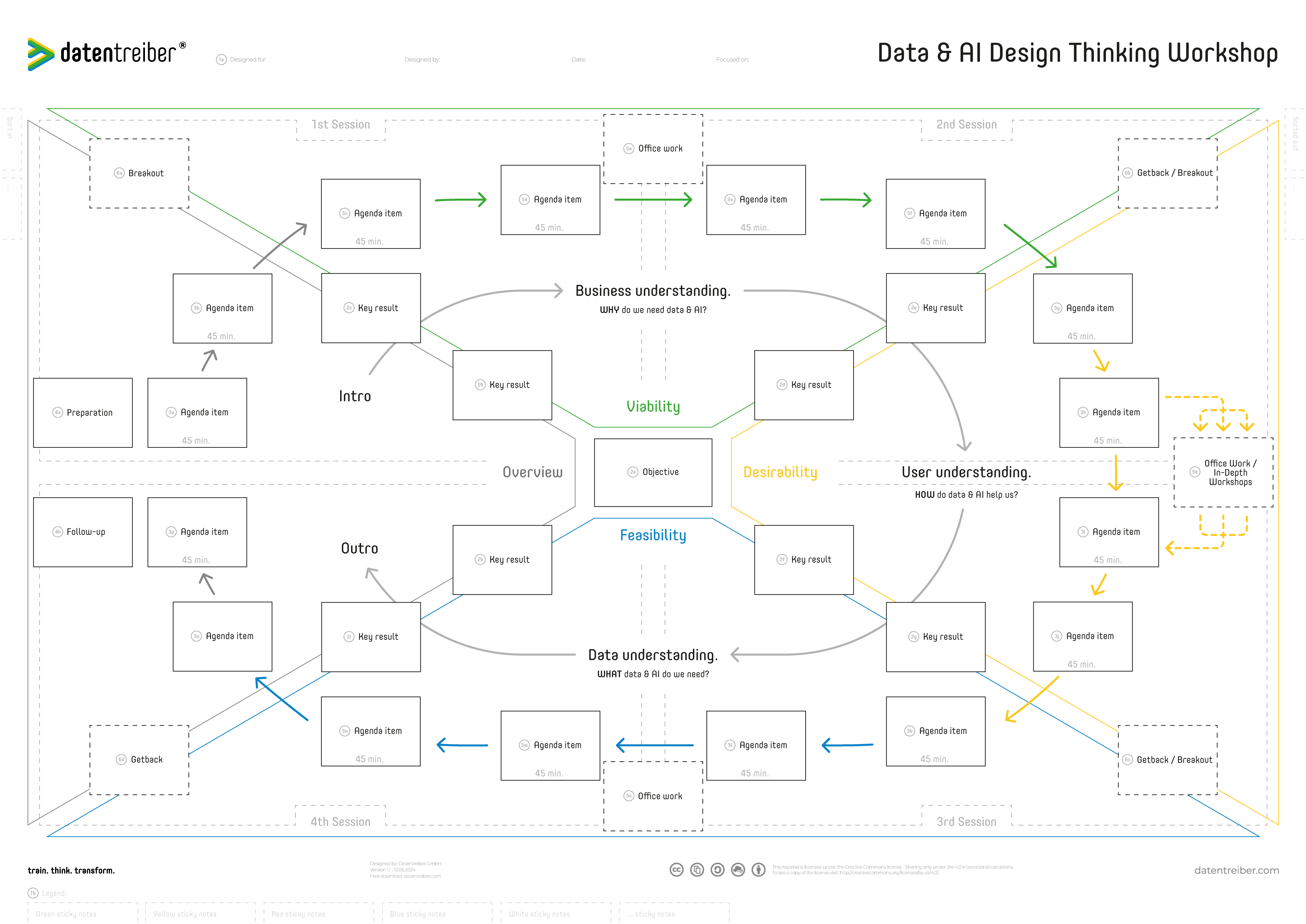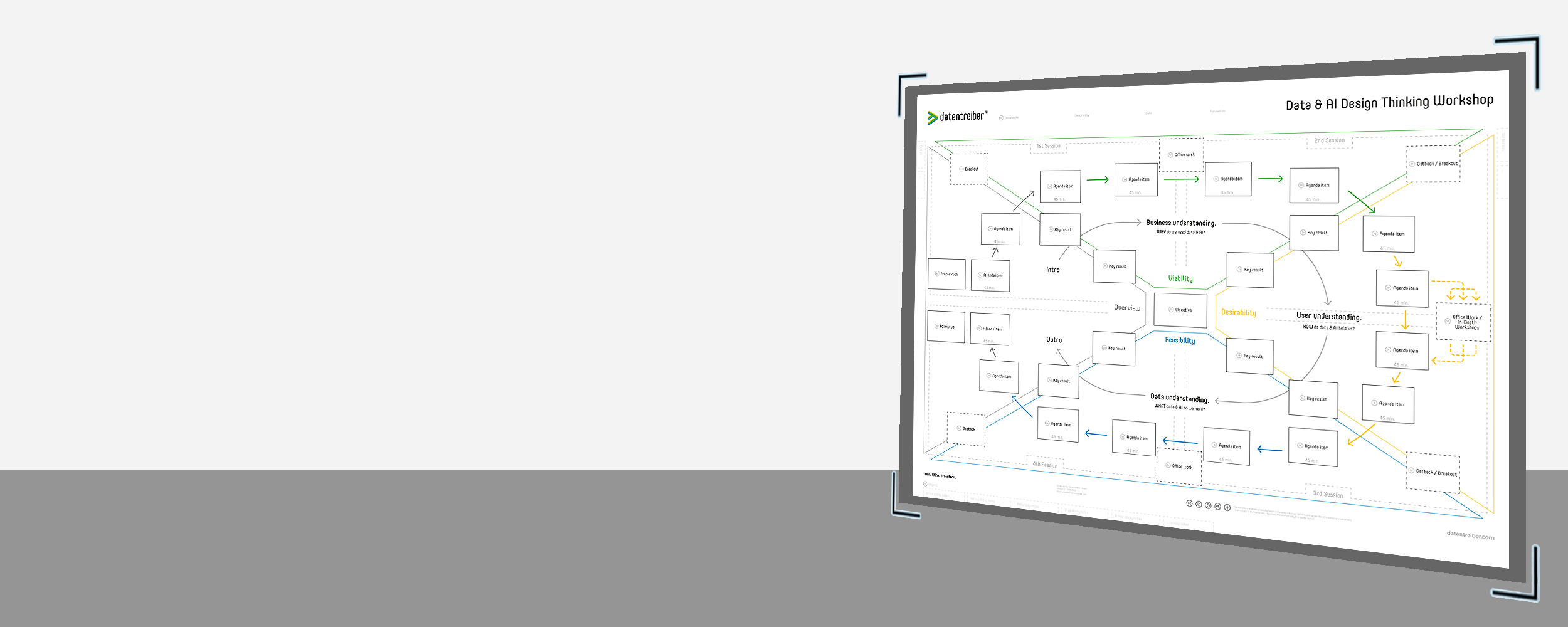
From Workshop Preparation to Follow-up
The Data & AI Design Thinking Workshop Canvas
The Data & AI Design Thinking Workshop Canvas provides a structured framework for organizing and conducting a collaborative data & AI strategy workshop, understanding the business, the user and the data.
What is the Data & AI Design Thinking Workshop Canvas?
The Data & AI Design Thinking Workshop Canvas provides a structured framework for organizing and conducting a collaborative data & AI strategy workshop. It guides you through each phase—from setting objectives and key results, to mapping out agenda items, preparation steps, follow-up tasks, and interim “office work” between sessions—ensuring that all participants maintain a clear overview of the process and its progress.
By dividing the workshop into distinct phases (Intro, Business Understanding, User Understanding, Data Understanding, and Outro), this canvas helps you align the agenda with your overall objectives and desired outcomes. Each phase corresponds to specific deliverables and key results, making it easier to measure progress, identify what’s left to accomplish, and adjust the plan if needed. Whether you’re running a two-day onsite workshop or multiple remote half-day sessions, the canvas serves as a reference point for everyone involved, enabling teams to stay focused, manage time effectively, and ensure that the resulting data and AI strategy is both actionable and value-driven.
The Data & AI Design Thinking Workshop Canvas is available for free under a Creative Commons license: You may use and modify the canvas as long as you cite Datentreiber in particular as the source.
When to Use the Data & AI Design Thinking Workshop Canvas?
The Data & AI Design Thinking Workshop Canvas is particularly useful in:
- Workshop Preparation:
Before the workshop, use the canvas to draft a proposed agenda and to clarify the workshop’s overarching objective and expected key results. Share this preliminary plan with stakeholders for feedback and adjustment. - Workshop Execution:
During the workshop itself, employ the canvas to guide participants through each phase and time slot. By visually representing the flow of activities, it supports transparent communication, highlights what has been completed, and shows what still needs to be done. - Progress Documentation and Adaptation:
As the workshop unfolds, update sticky notes to reflect completed tasks or ongoing agenda items. If external input or further research (office work) is required between sessions, the canvas keeps track of these intervals, ensuring continuity and accountability. After the workshop, it serves as a record of achieved results and identifies remaining actions for follow-up.
Using the Data & AI Design Thinking Workshop Canvas helps you maintain momentum, ensure alignment among all participants, and foster a collaborative environment that leads to meaningful, user-centric data and AI solutions rooted in practical business value.
How Do I Use the Data & AI Design Thinking Workshop Canvas?
A Data & AI Design Thinking workshop applies the design thinking approach to the co-design of data and AI strategies and products in interdisciplinary team workshops. The workshop consists of five phases:
- Intro: Introducing participants, objectives, agenda, etc.
- Business Understanding: Analyzing the business strategy, model, objectives, and processes, and identifying application domains and use cases.
- User Understanding: Determining the stakeholders and understanding the users’ perspectives.
- Data Understanding: Defining the AI and analytics solutions and exploring the data landscape for data assets, gaps, and issues.
- Outro: Determining the next steps and gathering feedback from the participants.
This methodical approach ensures that the data and AI strategy and products are viable for the business, desired by the users, and feasible for the implementers.
The workshop can be split into four sessions, with each session consisting of four 45-minute time slots. Therefore, a workshop lasts either 2 full days (recommended for onsite) or 4 half days (recommended for online).
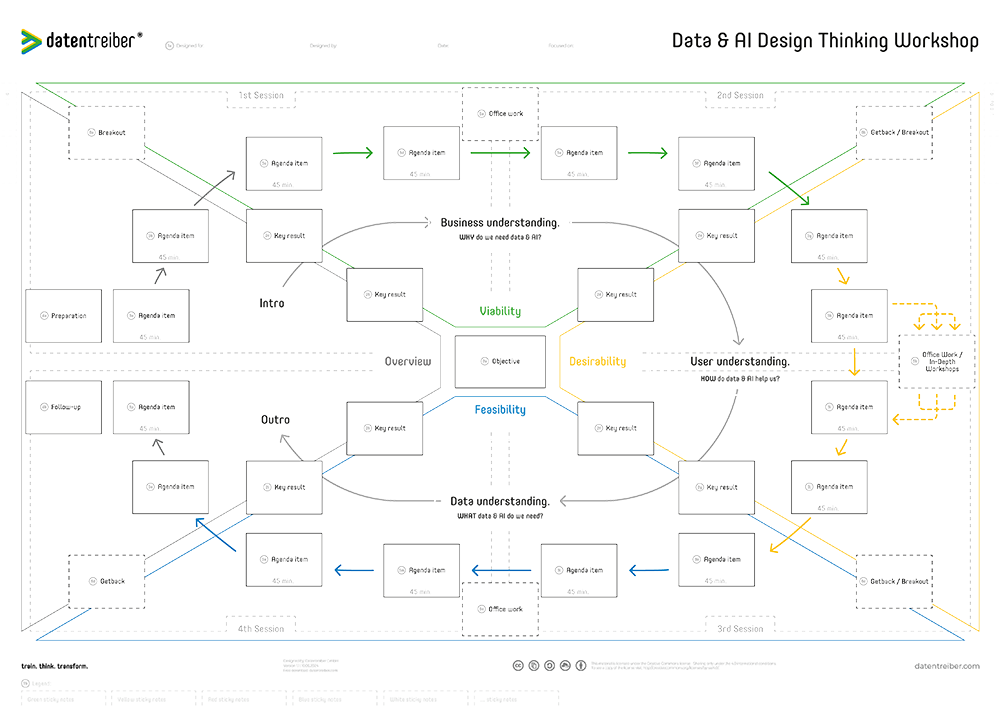
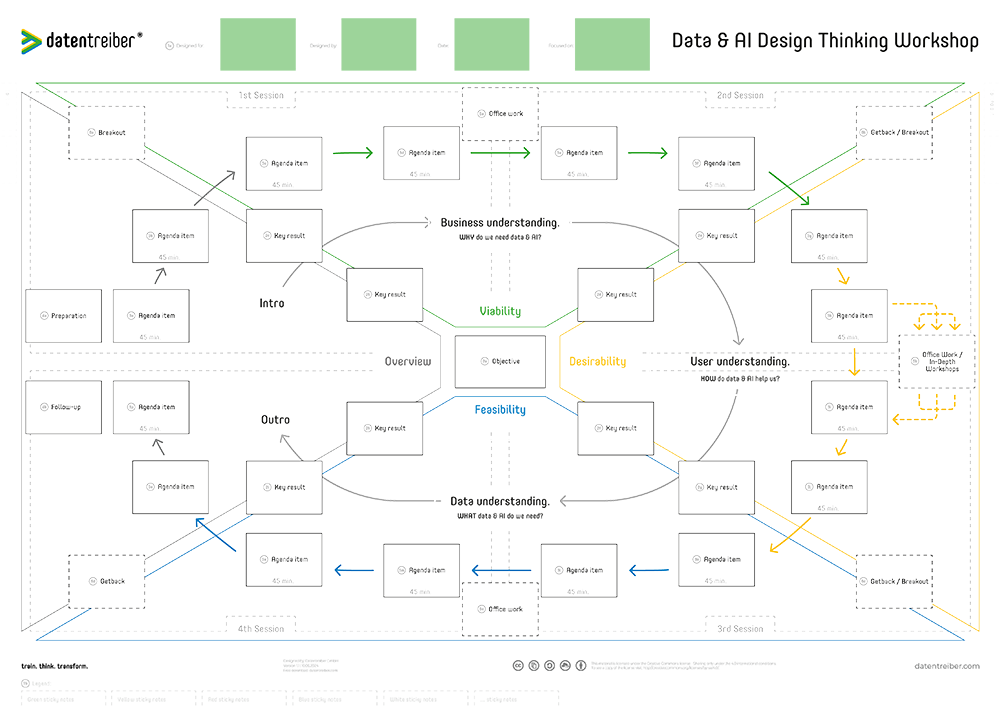
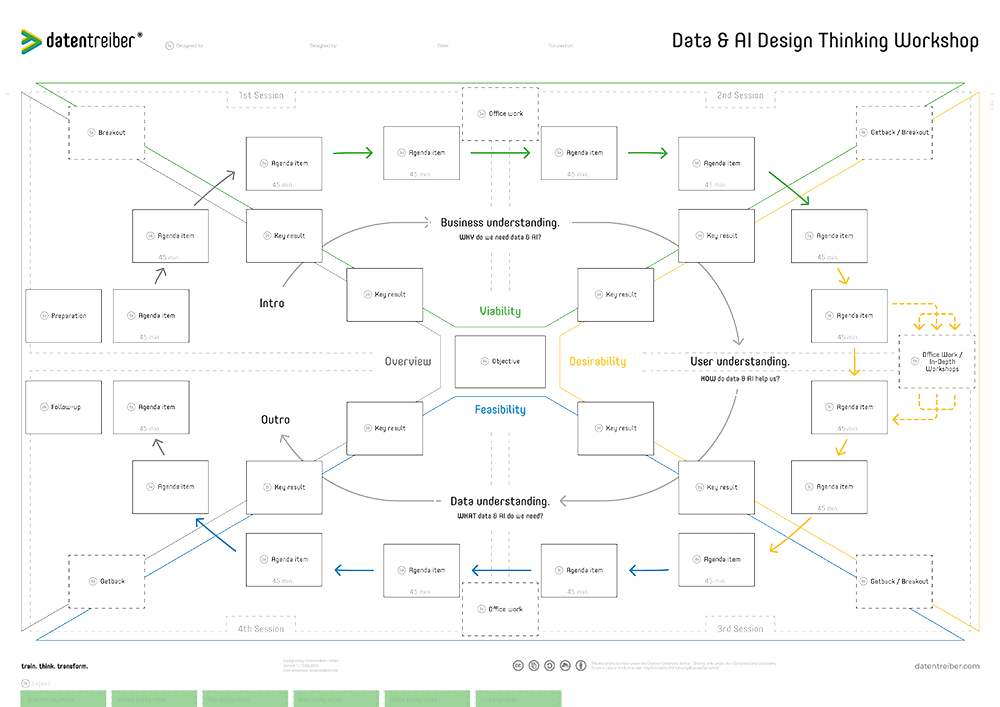
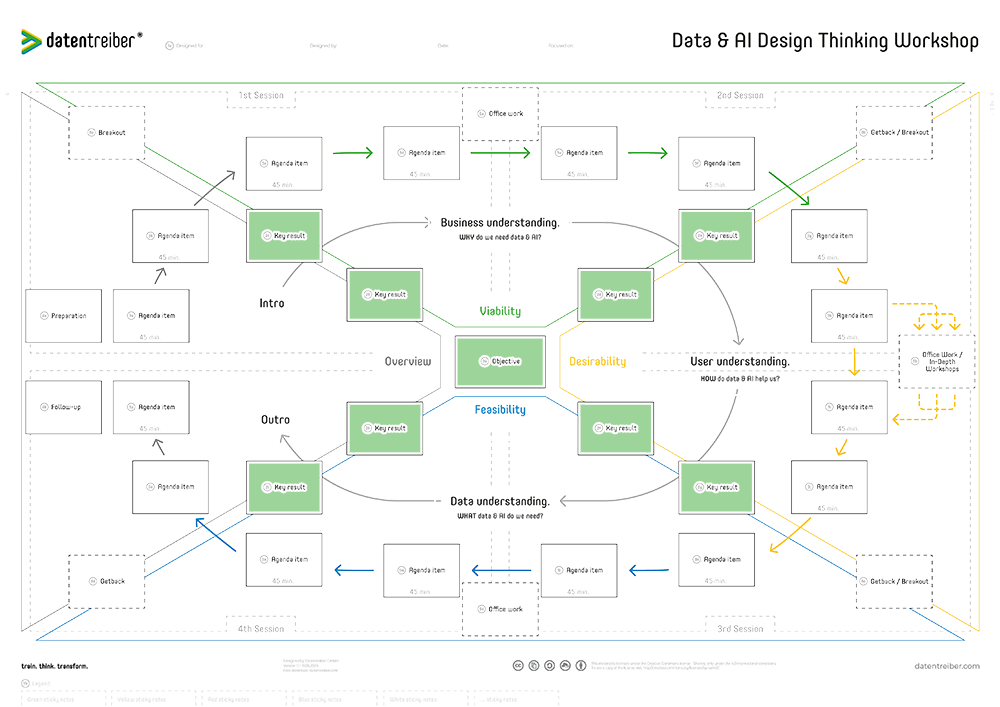
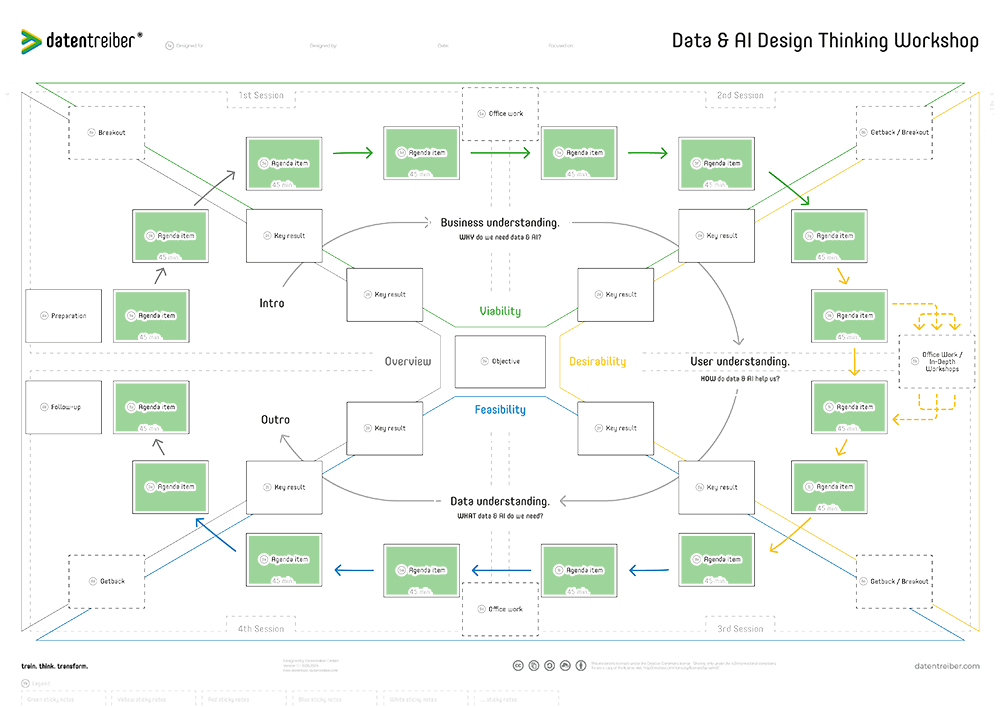
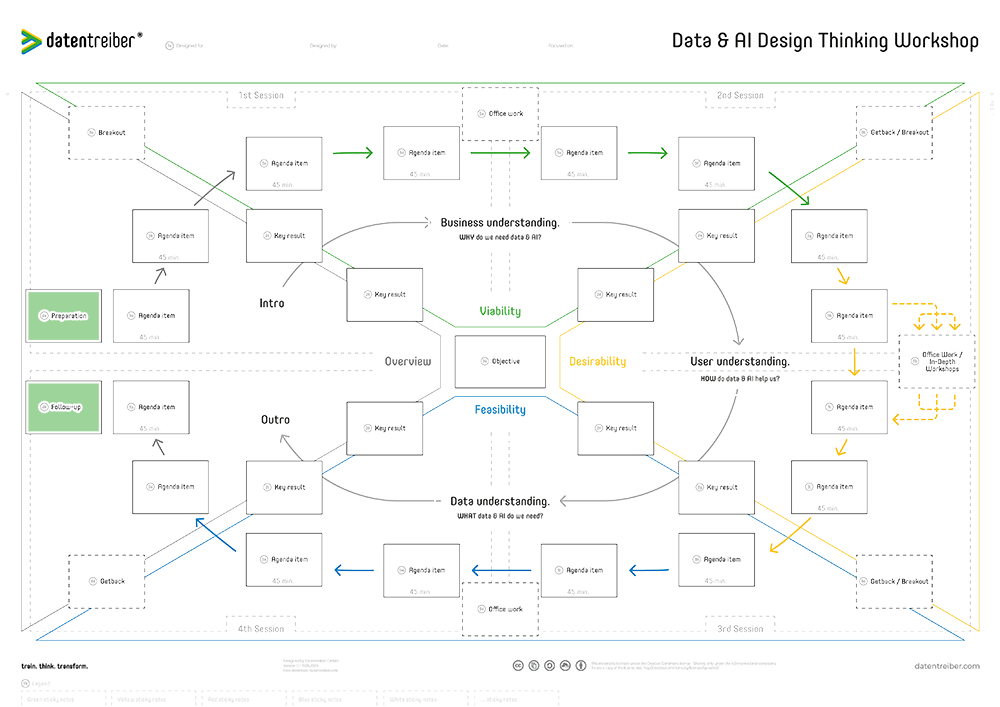
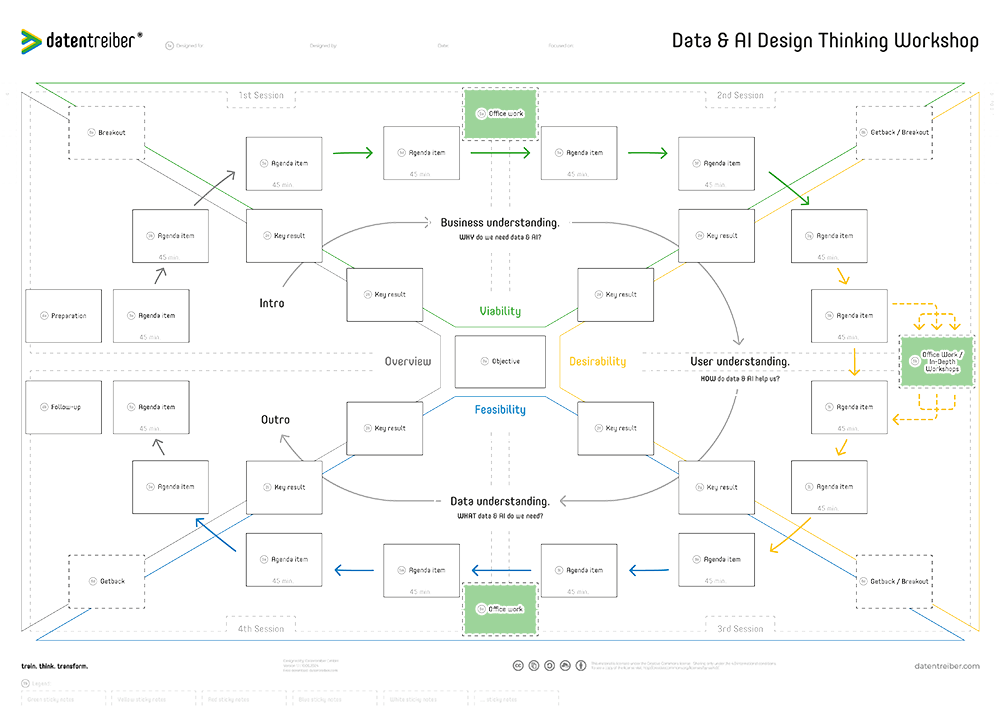
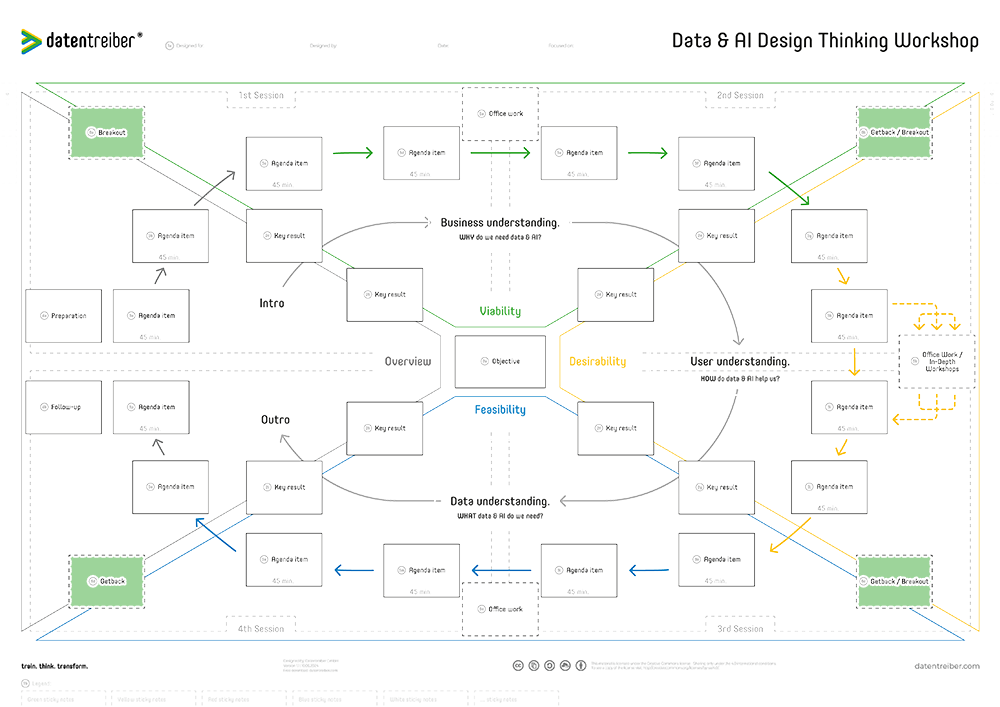
The Canvas Sections
①a Header
The header defines the content of the canvas and should consist of the following information:
- Designed for: Which organization (company, department, team, etc.) does the content of the canvas concern?
- Designed by: Which organization (company, department, team, etc.) created the content?
- Date: When was the content created or last updated?
- Focused on: On which area/topic/case/etc. does the content of this canvas focus?
There should be no copies of the same canvas with identical headers, i.e., the header clearly identifies a version of the canvas (copy) and documents the current status of its content.
② Objective & Key Results
What are the set objectives and the expected key results for the workshop?
- Objective (a): The objective defines the expectations and direction of the workshop, and it should be identical or aligned with the business objective.
- Key Results (b-i): The key results are the deliverables to be jointly designed by the participants at the end of each workshop phase, ensuring that the objective is achieved.
③ Agenda Item
What are the agenda items to be dealt with in a specific order in the workshop? An agenda item is a 45-minute time slot reserved for a specific task.
The sequence of tasks should lead to the expected outcome, producing key results at the end of each workshop phase.
④ Preparation & Follow-Up
How to prepare and follow up on the workshop? A data and AI design thinking workshop includes a preparation and follow-up meeting or call 1-2 weeks before or after the workshop.
- Preparation: This involves clarifying the expectations of the participants, finalizing the agenda, and briefing the participants with all necessary prior information and documents.
- Follow-Up: This includes providing updates on open questions, critical assumptions, and assigned tasks.
⑤a) Office Work / In-Depth Workshops
What can be done between the workshop sessions?
When workshop sessions are not scheduled back-to-back, participants can engage in office work to advance the workshop.
Tasks include:
- Follow-up: Documenting the last session or clarifying open questions.
- Preparation: Conducting research for the next session.
- Consolidation or Repetition: Revisiting tasks from the last session.
⑤b) Office Work / In-Depth Workshops: The term “In-depth Workshop” has a special meaning in developing a data and AI strategy. If this workshop is part of a multi-stage series to design a holistic data and AI strategy for the entire company, the main workshop will pause after the second session.
Several sub-workshops will continue during this pause, focusing on specific application domains or use cases. These in-depth sub-workshops will proceed from where the main workshop pauses. Once these sub-workshops conclude, the main workshop will resume with the third session, compiling and consolidating the key results from the in-depth sub-workshops.
⑥ Getback / Breakout
How can the tasks in the workshop be divided into breakout groups and brought together again?
At the start of a workshop phase, the group can be divided into subgroups to work on different tasks in parallel, such as analyzing multiple business processes. At the end of the workshop phase, the breakout groups reconvene to present their key results to each other.
Important: This approach works best for experienced teams with two or more facilitators trained in the method of Data & AI Business Design.
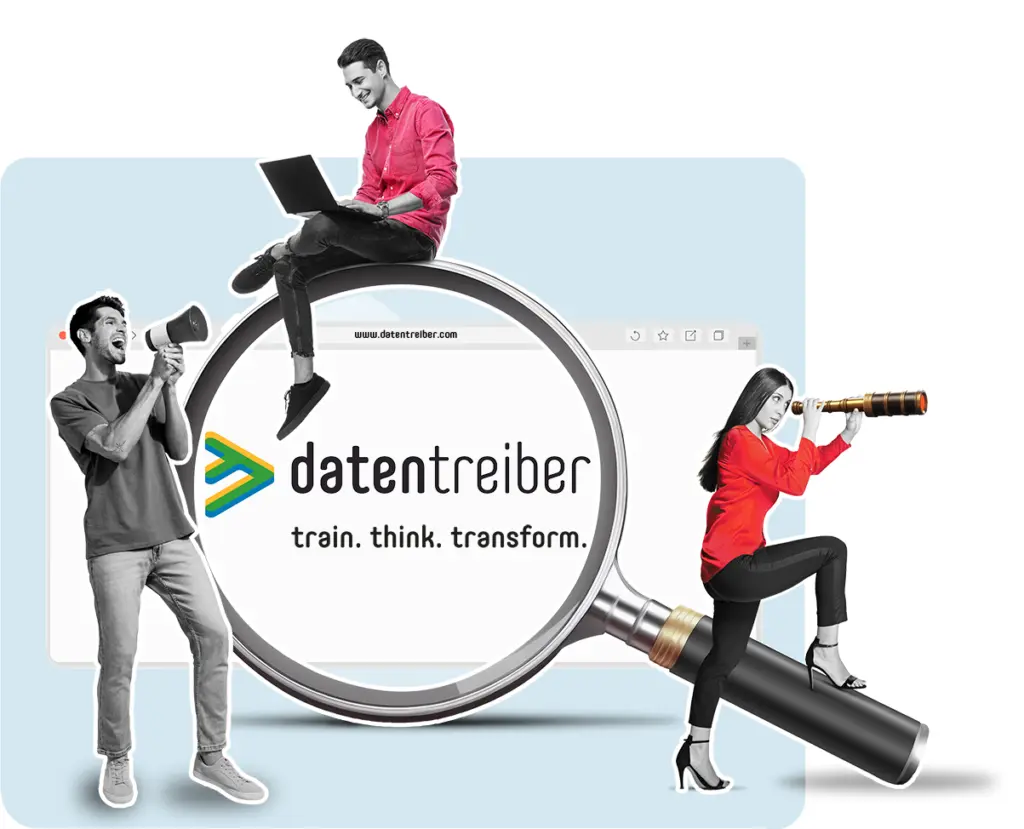
Where Can I Find More Information?
- Find detailed tutorials and examples on how to use the canvas in the context of designing a fully integrated data & AI strategy in our Data & AI Design Bench.
- Data Thinker-Group (LinkedIn)
